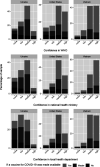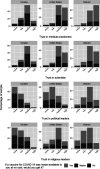Understanding Vaccine Hesitancy in the Context of COVID-19: The Role of Trust and Confidence in a Seventeen-Country Survey
- PMID: 34744589
- PMCID: PMC8565283
- DOI: 10.3389/ijph.2021.636255
Understanding Vaccine Hesitancy in the Context of COVID-19: The Role of Trust and Confidence in a Seventeen-Country Survey
Abstract
Objectives: An effective vaccine to SARS-CoV-2 cannot be successfully deployed if a significant number of people worldwide are unwilling to accept it. We investigated the relationship between trust in scientists and medical professionals and perceptions of vaccine safety and effectiveness. We also build on past studies by exploring the relationship between confidence in global health organizations and vaccine hesitancy. Methods: We conducted an online survey in seventeen countries/territories across five world regions between May -June 2020. We assessed the relationship between COVID19 vaccine hesitancy, confidence in public health organizations, and trust in key experts and leaders. Results: Our findings strongly suggest that confidence in the World Health Organization combined with trust in domestic scientists and healthcare professionals is a strong driver of vaccine acceptance across multiple countries/territories. Conclusion: We find that hesitancy is widespread, and uptake would be insufficient to achieve herd immunity. There is widespread confidence in how public health organizations have responded to the current pandemic and this is related to vaccine acceptance. Our results also highlight the important role of trust in health care providers and scientists in reducing COVID19 vaccine hesitancy.
Keywords: COVID-19; global health; public health; trust; vaccine hesistancy.
Copyright © 2021 Rozek, Jones, Menon, Hicken, Apsley and King.
Conflict of interest statement
The authors declare that the research was conducted in the absence of any commercial or financial relationships that could be construed as a potential conflict of interest.
Figures




References
-
- World Health Organization (WHO). Ten Threats to Global Health in 2019 (2019). Available from: https://www.who.int/newsroom/feature-stories/ten-threats-to-global-healt... (Accessed March 1, 2021).
MeSH terms
Substances
LinkOut - more resources
Full Text Sources
Medical
Miscellaneous

